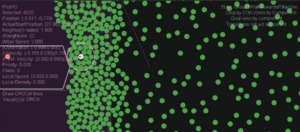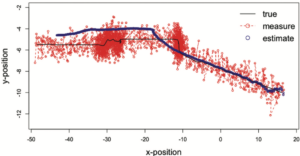Great News: Our IBM CAS Canada Project# 1046 was awarded IBM CAS – 2021 Project of the Year! Please see the details of the project below.
Making existing software quantum-safe, IBM CAS Canada (Project# 1121)
Motivation: The quantum advantage helps speed up computations in many areas. However, the power of quantum computers can also be leveraged to break modern cryptographic algorithms. To maintain the crypto-agility of software, we must prepare for the era of quantum advantage now.
Method: Asymmetric encryption algorithms will need to be replaced by quantum-resistant alternatives; symmetric encryption algorithms need to double key size to support the same level of protection. We propose a 7E roadmap for software developers, summarizing steps needed to address encryption-related challenges associated with quantum advantage.
Results: We are working on a project to make the existing relational database management system quantum resistant but also have the crypto-agility ability to rapidly switch between cryptographic algorithms without changing the rest of the software significantly. Here is the news.
Conversion and retention of the users, IBM CAS Canada (Project# 1046)
Motivation: A Cloud system consists of a huge number of hardware and software components. Appropriate health monitoring of these components and accurate detection of any abnormality play a vital role in ensuring reliable and uninterrupted service operation, which is the service’s key characteristics from the clients’ perspective.
Method: We designed a layered and microservice-based architecture that constructs a scalable and reliable data collection pipeline. The pipeline can collect data from various sources, e.g., message queues and databases. Once the collected data are validated and normalized, they are sent to the analytics component that marks observations as normal or anomalous. The anomalies are reported to the Console DevOps team for feedback and validation.
Results: We have explored recurrent neural networks to analyze time series data and identify anomalies. To the best of our knowledge, we are the first to use the GRU-based autoencoder model incorporated with the likelihood function for anomaly detection in multi-dimensional Cloud components telemetry. Our model has a high accuracy of 99.95%, and the precision of ≈ 74% was an improvement over the existing DevOps team approaches.
Crowd simulation to prevent stampedes with Laipac
Motivation: In large crowd events, there is always a potential possibility that a stampede accident will occur. The accident may cause injuries or even death. For instance, 36 people were killed in 2014 Shanghai Stampede. Approaches for controlling crowd flows and predicting dangerous congestion spots would be a boon to on-site authorities to manage the crowd and to prevent fatal accidents.

Method: One of the most popular approaches is real-time crowd simulation based on position data from personal Global Positioning System (GPS) devices. However, the accuracy of spatial data varies for different GPS devices, and it is also affected by an environment in which an event takes place. In this project, we assess the effect of position errors on stampede prediction. We propose an Automatic Real-time dEtection of Stampedes (ARES) method to predict stampedes for large events. We implement three different stampede assessment methods in Menge framework and incorporate position errors.

Results: Our analysis suggests that the probability of simulated stampede changes significantly with the increase of the magnitude of position errors, which cannot be eliminated entirely with the help of classic techniques, such as the Kalman filter. Novel stampede assessment methods should be developed, focusing on the detection of position noise and the elimination of its effect.
